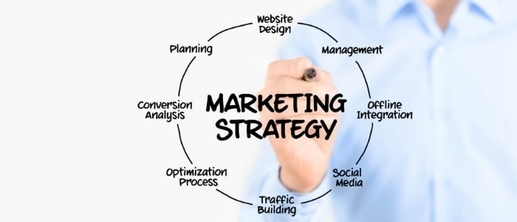Marketing Strategies: A Comprehensive Overview

Marketing Strategies: A Comprehensive Overview
Marketing strategies are essential frameworks used by businesses to effectively reach their target audience, communicate value, and achieve competitive advantages in the market. These strategies integrate research, tools, and methodologies to attract customers, build brands, and drive sales. It’s a cornerstone of modern business education, especially in programs such as MBAs or specialized marketing certifications.
Key Components of Marketing Strategies
-
Market Research and Consumer Behavior:
- Understanding customer needs, purchasing habits, preferences, and challenges is the foundation of any marketing strategy.
- Techniques include:
- Surveys and Questionnaires: Gathering primary data from customers.
- Focus Groups: Testing products and services with targeted audiences.
- Data Analytics: Leveraging digital platforms to analyze trends and behaviors.
-
Target Market and Segmentation:
- Dividing the market into segments based on demographics, psychographics, geography, or behavior.
- Tailoring marketing efforts to these specific segments enhances efficiency and effectiveness.
- Common segmentation approaches:
- Demographic: Age, income, gender, education level.
- Behavioral: Purchase patterns, loyalty, usage rate.
- Geographic: Urban, rural, international regions.
- Common segmentation approaches:
-
Positioning and Branding:
- Positioning refers to how a brand or product is perceived in the minds of consumers, relative to competitors.
- Creating a powerful brand identity through unique messaging, visuals, and experiences.
- Key elements include:
- Defining the Unique Value Proposition (UVP): What makes a product or service different from competitors.
- Designing logos, slogans, and a consistent brand voice.
- Building brand trust through customer engagement and quality.
- Key elements include:
-
Promotional Strategies (Integrated Marketing Communications):
- Utilizing various channels to deliver a consistent message to consumers, such as:
- Traditional Media: TV, radio, print ads.
- Social Media: Platforms like Facebook, Instagram, and TikTok for ongoing customer engagement.
- Public Relations (PR): Building a positive company image via public events, press releases, and media relations.
- Advertising: Crafting compelling ad campaigns to promote products/services.
- Content Marketing: Blogs, eBooks, videos, and white papers that provide free value to generate interest.
- Utilizing various channels to deliver a consistent message to consumers, such as:
-
Digital Marketing Strategies:
- With growing reliance on technology, digital marketing is indispensable.
- Search Engine Optimization (SEO):
- Improving website rankings through organic search.
- Pay-Per-Click Advertising (PPC):
- Paid ads to drive immediate traffic to websites (e.g., Google Ads).
- Email Marketing:
- Nurturing leads and existing customers via personalized email campaigns.
- Social Media Advertising:
- Targeting audiences with tailored ad campaigns on platforms like LinkedIn, Instagram, or Facebook.
- Search Engine Optimization (SEO):
- With growing reliance on technology, digital marketing is indispensable.
-
Product Design and Development:
- Implementing strategies around life cycle management, innovation, and customer feedback:
- Product Differentiation: Offering unique features or add-ons.
- Pricing Strategies:
- Penetration Pricing: Setting low prices initially to capture market share.
- Skimming Pricing: Introducing high prices for innovative products, reducing later.
- Competitive Pricing: Aligning prices to industry norms.
- Examining product life cycle stages: Growth, maturity, and decline.
- Implementing strategies around life cycle management, innovation, and customer feedback:
-
Distribution and Logistics (Place Strategies):
- Ensuring products are available where and when customers need them:
- Direct distribution (e.g., online stores or brand outlets).
- Indirect distribution via third parties (e.g., retail chains, distributors).
- Ensuring products are available where and when customers need them:
-
E-Commerce and Omni-Channel Strategies:
- Increasing focus on integrating physical and digital shopping channels to create seamless customer experiences.
- Examples include:
- Click-and-collect models: Buy online, pick up in-store.
- Mobile commerce innovations.
Steps to Develop an Effective Marketing Strategy
-
Define Objectives:
- Align marketing goals with broader business goals. Examples:
- Launching a new product.
- Expanding into new geographic markets.
- Building brand awareness.
- Align marketing goals with broader business goals. Examples:
-
Analyze the Market:
- Conduct a competitor analysis to understand their strengths, weaknesses, and strategies.
- Use tools like SWOT analysis to identify opportunities and threats.
-
Develop a Marketing Mix (The 4 Ps):
- Product: Determine the features and benefits of the product/service.
- Price: Decide on pricing strategies based on costs, market conditions, and competitors.
- Place: Choose distribution channels.
- Promotion: Select communication strategies.
-
Implement and Monitor Campaigns:
- Use performance metrics (KPIs) like engagement rates, conversion rates, and ROI to evaluate results.
- Make adjustments in real-time, if necessary.
Marketing Strategies in a Digital-First World
With the rise of technology and online platforms, new-age marketing strategies have emerged:
-
Personalization:
- Using data analytics to create marketing campaigns tailored to individuals.
- Examples:
- Personalized emails based on browsing history.
- Dynamic product recommendations.
-
Influencer Marketing:
- Collaborating with social media influencers to promote brands/products.
- Effective for building trust and reaching niche audiences.
-
Social Media Strategies:
- Creating engaging content to drive organic reach, engagement, and followers on Instagram, Twitter, LinkedIn, and TikTok.
-
Storytelling Marketing:
- Establishing emotional connections with customers through compelling narratives in advertising and brand communication.
Career Opportunities in Marketing Strategies
An education in marketing strategies can lead to diverse career opportunities, including:
- Marketing Manager:
- Overseeing campaigns, developing strategies, and analyzing results.
- Brand Manager:
- Driving brand development and identity.
- Digital Marketing Specialist:
- Executing SEO/SEM campaigns, social media strategies, and email marketing.
- Market Research Analyst:
- Collecting and analyzing consumer data to guide decision-making.
- Content Strategist:
- Designing and overseeing content marketing initiatives.
Marketing Strategy Education in Canada
Canadian business schools offer extensive programs focusing on marketing strategies:
- Rotman School of Management (University of Toronto):
- Offers courses on digital marketing, global branding, and consumer insights.
- Schulich School of Business (York University):
- Known for its focus on brand management and innovative marketing strategies.
- Sauder School of Business (University of British Columbia):
- Provides specialized courses in customer experience management and e-commerce.
- HEC Montréal:
- Focuses on marketing analytics and international marketing strategies.
Conclusion
Marketing strategies are dynamic and multifaceted, combining traditional principles with digital innovations to create impactful connections with customers. By understanding consumer behavior, leveraging technology, and employing data-driven insights, businesses can craft strategies that drive growth and achieve competitive advantages. Effective marketing strategies are not static—they evolve with consumer demands, market conditions, and technological advancements.
